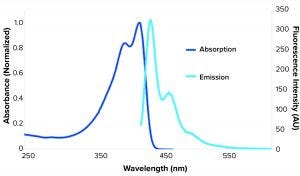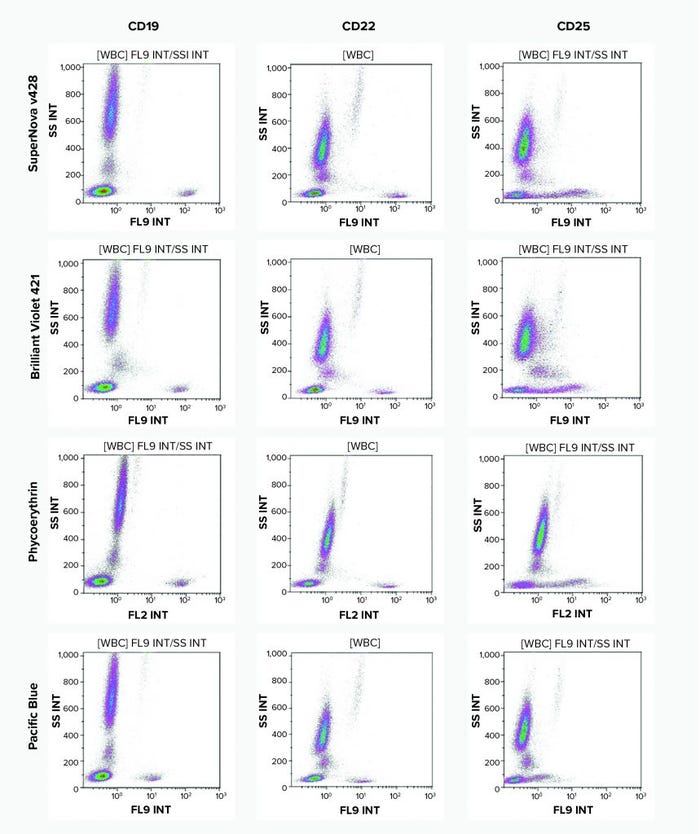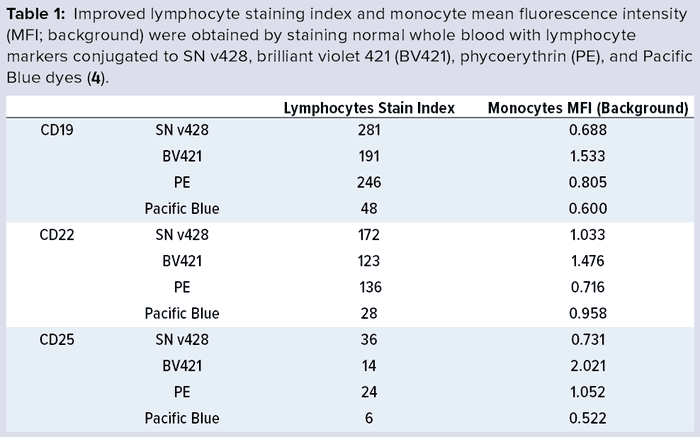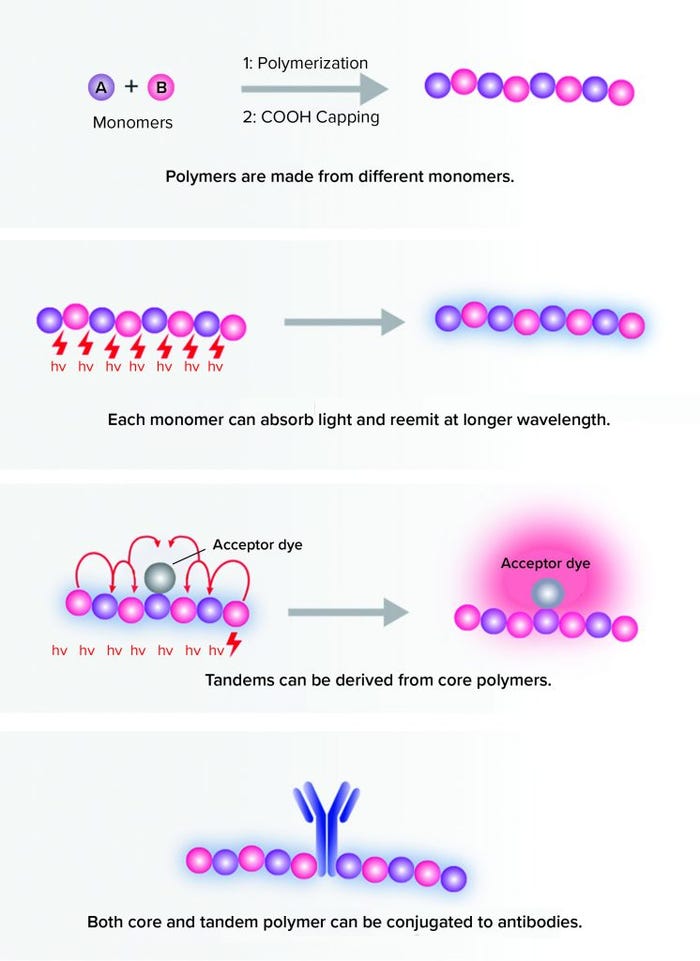
Figure 1: Absorption and emission spectra
(λexc = 405 nm) of SuperNova v428 in phosphate-buffered saline (2)
Since the emergence of SARS-CoV-2, scientists have discovered more about the role of our immune systems and cytokine-associated processes responsible for systemic immune reactions that are typical in patients with COVID-19 (1). Flow cytometry is used to understand those processes at a single-cell level. It is the standard method used in immunology to characterize multiple phenotypic and functional parameters of single cells, including cytokine analysis.
Despite advances in flow cytometry instrumentation, reagents, and analytical software, several challenges remain. Conjugated antibodies with improved brightness, stability, and specificity are needed. They also need to have narrow excitation and emission spectra so that different fluorochromes can be used in combination. That would enable scientists to analyze multiple parameters from one sample simultaneously.
Low sensitivity also is a problem. Fluorescent conjugates can detect highly abundant markers accurately. But the biopharmaceutical industry also needs conjugated antibodies that are sensitive enough to detect and quantify low-abundance markers precisely. A further complication encountered with antibody-based methods, including flow cytometry, is that of nonspecific binding of antibodies to Fc receptors expressed by multiple immune cell types (2).

Figure 2: SuperNova v428 dye conjugated with CD19, CD22, and CD25 demonstrated systematically higher brightness than Brilliant Violet 421, phycoerythrin, and Pacific Blue dyes and less nonspecific staining compared with BV 421 dye (2). (FL = fluorescent light, INT = intensity, SS = single scatter)
Brighter Options to Detect Dimly Expressed Markers
Developers continue to innovate and produce new types of fluorochrome conjugates. The latest offering is the SuperNova v428 dye from Beckman Coulter Life Sciences. It is the first of a series of next-generation polymer dyes that is optimally excited by a violet laser at a wavelength of 405 nm (Figure 1) (3). The SuperNova v428 dye has an excitation maximum of 414 nm, its emission wavelength peaks at 428 nm, and it is detectable using a 450/50 bandpass filter or equivalent. It is one of the brightest dyes excitable by a violet laser, systematically surpassing brightness of other fluorochromes, including Brilliant Violet (BV) 421 polymer dye, phycoerythrin (PE, a phycobiliprotein), and Pacific Blue dye (Figure 2) (3).
SuperNova v428 dye is 10 times brighter than Pacific Blue dye. Because of its brighter signal, SuperNova v428 dye also is better for discriminating between negative and positive cell populations with significantly less noise (3). Table 1 shows that when conjugated to antibodies, SuperNova v428 dye generates significantly less nonspecific staining than other dyes, thus providing researchers with greater confidence in their flow cytometry results (Table 1) (3). That capability was achieved through a new proprietary formulation containing unique additives to facilitate minimization of nonspecific signals. The improved staining index of this next-generation polymer dye conjugate promises to be especially suitable for studying low-abundance and dimly expressed markers.

The SuperNova v428 core polymer dye can be linked to acceptor dyes to create tandem polymer dyes. Those dyes share the same absorbance properties as the core, but absorbed light is transmitted through the polymer chain to the acceptor dye, which reemits light at a higher wavelength (Figure 3). SuperNova v605 and v786 dyes, with maximum emission at 605 nm and 786 nm, respectively, are the first tandems developed by Beckman Coulter Life Sciences. Thanks to optimal fluorescence resonance energy transfer (FRET) efficiency, the tandems maintain optimal brightness and provide additional options for flow cytometrists to assess dimly expressed markers. Beckman Coulter Life Sciences also developed a proprietary manufacturing process ensuring greater stability of the tandem dyes.

Figure 3: SuperNova polymer dyes technology
References
1 Cossarizza A, et al. SARS-CoV-2: The Virus that Causes COVID-19 — Cytometry and the New Challenge for Global Health. Cytometry Part A. 97(4) 2020: 340–343; https://doi.org/10.1002/cyto.a.24002.
2 Easwaran A, et al. SuperNova v428: New Bright Polymer Dye for Flow Cytometry Applications. Beckman Coulter Life Sciences; https://www.beckman.com/gated-media?mediaId=%7B0B9C63D3-1567-404C-883C-CD9665FC83F0%7D.
3 SuperNova Fluorescent Polymer Dyes. Beckman Coulter Life Sciences; https://www.beckman.com/reagents/coulter-flow-cytometry/supernova-fluorescent-polymer-dyes.
Brice Ezzouaouy is senior product manager at Beckman Coulter Life Sciences; 33-491-172-780; [email protected].











